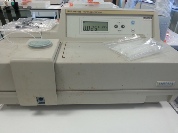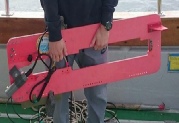
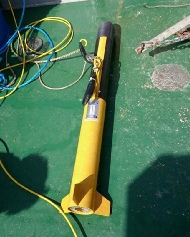

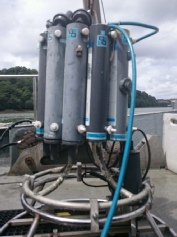
ADCP
Acoustic Doppler Current Profilers are sensors used to measure the speed and direction of currents. ADCPs send and receive high frequency sound beams. There are four of these beams that can be used to detect the direction and speed of the water column using the Doppler Effect, and extrapolated in the X, Y and Z directions.
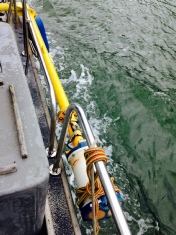
CTD
CTD rosettes consist of a number of sensors mounted onto a frame, a pump (used to keep a constant flow of water over the sensors), and Niskin bottles. Sensors used in this study include conductivity, temperature, pressure, transmission, fluorescence and dissolved oxygen. Profiles are generated when the CTD is lowered through the water column and features of interest, such as thermoclines and chlorophyll maxima, are used to determine at which points to fire the Niskin bottles on the way back up.
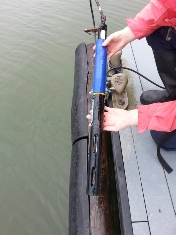
ExoProbe
This is a multiprobe which can measure parameters such as temperature, salinity, pH, dissolved oxygen and depth. It is lowered into the water column on a cable but as it measures depth via pressure, it cannot sense the seafloor so must be lowered carefully to avoid damage.
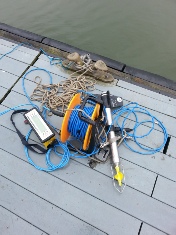
Flow Meter
Flow meters are used to measure the speed of a flow. The flow meter is lowered into the water column. The flow meter has a propeller, and the speed of rotation of the propeller is proportional to the speed of the current.
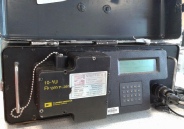
Fluorometer
Fluorometers measure parts of the emission spectrum of a substance after excitation by fluorescent light. This machine was used to measure the amount of chlorophyll in the samples collected.
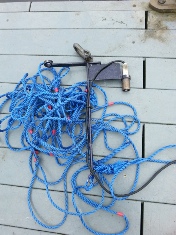
Light Meter
The light meter is comprised of two sensors, one on the surface, and the other lowered to the desired depth. From these irradiance readings, the difference between the light at the surface and the light levels at depth can be calculated. As the difference is relative this accounts for changes in cloud cover and precipitation. The irradiance attenuation coefficients can also be calculated from this data.
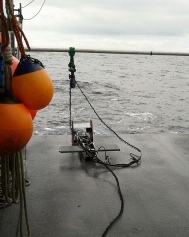
Minibat
The minibat is towed behind a vessel in a straight line transect and provides physical parameters, similar to those used on a CTD (see above) over varying depth along a transect between 5-40m.
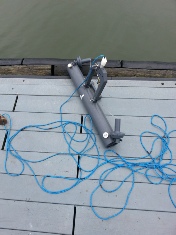
Niskin Bottle
Niskin bottles are used to collect water samples and are attached to a length of cable. They are lowered into the water on a weighted line and a messenger was used to close them at the desired depth.
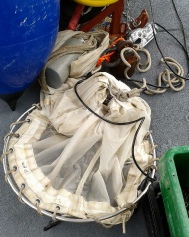
Plankton Net
The plankton net was used in the collection of zooplankton samples. The net was towed behind the vessel at a low speed. Using the diameter of the net, the speed of the tow and the time, the volume of water sampled can be calculated. The net is then recovered to deck, rinsed into the bottle and fixed with formalin.
Side Scan
A side scan sonar towfish with a swath of 75 m was used to map the sea floor using sound beam transmission and detection. The towfish was linked by cable to a live screen, displaying the picture generated, based on the strength of the returning signal.
UV Spectrometer
A UV spectrometer was used to determine the concentration of nutrients in a water sample. The greater the absorbance by the sample, the more of that nutrient there is present.
Video Camera
This waterproof camera was towed by the vessel just above the sea floor in order to allow for real time video images to be viewed and species to be identified in regions where grabs were not permitted.
